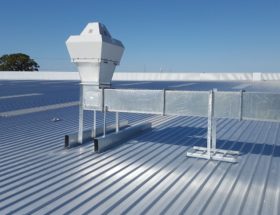It’s easy to understand the significance of modern technology when you think about computers and improved communication, but have you ever thought about how new developments can help in the construction world? Construction workers and engineers are able to produce safer, more sustainable and sturdier buildings through the advent of new tools and power equipment aid, and also from the continued improvement of insulation techniques.
The invention of spray foam has significantly impacted many aspects of the construction world. In attics, walls and as trench breakers, its uses are ever-evolving and proving more and more beneficial as its composition is honed.
Trench Breakers
When you think of spray foam, you might not immediately think of protecting holes in the ground, but maybe you should! Often, when pipes are installed in the ground, they’re placed in trenches that can be wide and deep. These trenches need to be insulated to protect from erosion and the dangers of a potential collapse. Sandbags were once the go-to for this purpose, but now spray foam trench breakers are typically used to provide a sturdier and more reliable option.
Attic Insulation
One of the most common uses of spray foam is for insulation in attics in place of fiberglass insulation. The benefits of spray foam are that it lasts longer and can provide more protection from the elements than fiberglass. Although it is often more expensive, more and more homeowners are opting to use spray foam insulation.
Wall Insulation
Many well-constructed homes employ the use of insulation in the walls between the studs and the drywall to ensure the home remains energy efficient and at as constant a temperature as possible during the hot summer and cold winter months. As with attics, in the past, these homes had to use fiberglass insulation in their walls. Now, though, home- and business owners are able to opt for spray foam insulation to protect their buildings.




